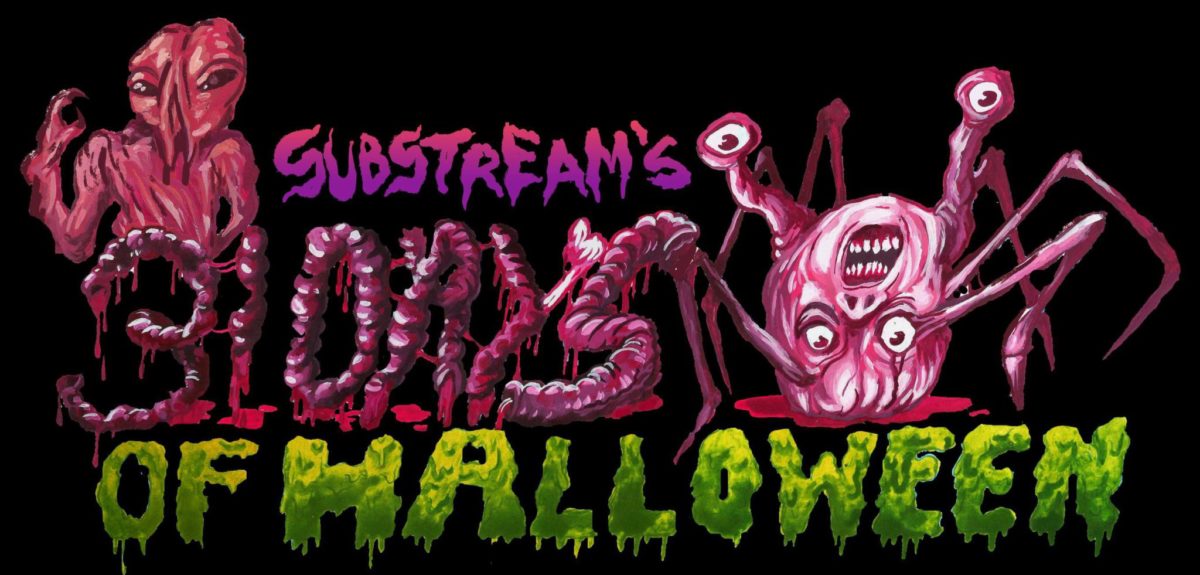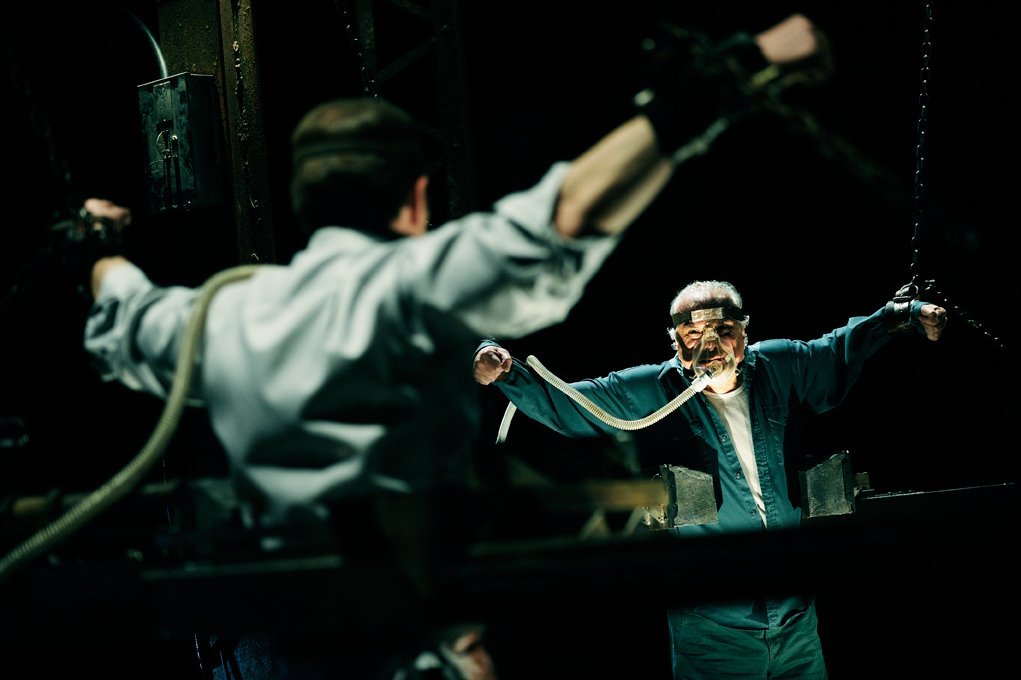Of all the holidays celebrated worldwide, no single day is loved by the Substream staff more than Halloween. With October’s arrival, the time has finally come to begin rolling out a slew of special features we have prepared in celebration of our favorite day.
31 Days Of Halloween is a recurring column that will run throughout the month of October. The goal of this series is to supply every Substream reader with a daily horror (or Halloween-themed) movie recommendation that is guaranteed to amplify your All Hallows’ Eve festivities. We’ll be watching every film the day it’s featured, and we hope you will follow along at home. Reader, beware, you’re in for a… spooky good time!

No horror franchise in the history of cinema may ever have a fanbase as divisive as Saw again—and given its track record, it’s easy to understand why. The 2004 low-budget-cult-hit-turned-utter-phenomenon gathered quite a bit of attention, drawing audiences in with its inventive traps, fun plotting, and a twist that you may or may not have seen coming by the story’s unfortunate end.
It may be redundant at this point to go over the plot, as there are, what, three of you that aren’t familiar with it? In short, two men (played by Cary Elwes and screenwriter Leigh Whannel) wake up in a rancid room with their legs chained to opposite sides of the room with little recollection of how they got there—seemingly not knowing one another—with a man lying dead between them, presumably from suicide. With a few simple leads to guide them to their mission and true purpose for being there, the two must figure out who has put them there and how to get out before time runs out. All of this is combined with multiple subplots regarding each of their personal lives, their careers, and loose connections with the Jigsaw killer, really named John Kramer (Tobin Bell)—a serial murderer who puts his victims in deadly scenarios, asking them to commit the impossible in order to live and (hopefully) learn to appreciate their lives more.
The original Saw has flaws; the pacing is sometimes off, the acting can be a little stilted, and thinking about its premise a little too much may start to reveal plotholes, but it definitely sparked an interest in this sort of story, putting many audiences in a “what would you do?” mindset throughout the film’s course of events that kept their attention, never letting up for air as the plot thickens.
In fact, fans loved the original Saw so much that it inevitably resulted in a sequel….which resulted in another sequel… and another… and another… until the Saw legacy finally tapped out in 2010 with its seventh installment (only this time IN THREEEEEE DEEEEEEE!!!).
While most people, even its biggest deniers, can admit that, despite the first film having its problems, the first Saw is a harmless one-off exercise in low budget suspense, those same viewers universally agree that either some or all of its sequels are completely disposable, grotesque, and all-around unpleasant. And I’d be lying if I said I didn’t agree with them.
Though all of the sequels had their unique problems, their biggest was not being able to compete with or match the visceral reality or excitement of the first film. Saw II, though it had an admirable grimy quality, interesting group dynamic and great twist at the end, had characters so unlikable that any of the enjoyment that was created with its dynamite setup, production design, and improved traps was squashed by their inability to make coherent decisions and work together. This, as we know, was a sharp contrast the first film, where much of the enjoyment came from watching our two main characters work together in order to get out of the room alive.
Saw III, arguably the goriest and most unpleasant of the already bleak franchise, while hosting an interesting revenge dynamic to the main character’s journey… well… see “goriest and unpleasant” and you’ll start to see where it lost me, personally. And while the film had enough of its loopholes closed to arguably end the series on a decent note after this film, the studio decided to press on and continue the franchise’s legacy. Goodie.
This brings us to Saw IV, which was the first time in this franchise where I felt my time was truly wasted. What… so Lieutenant Daniel Rigg from Saw II (Lyriq Bent) needs to learn a lesson about… not going through unsecured doors? And in order to do so, Rigg must understand why Jigsaw does what he does by going through the games himself? And in the meantime, we get to learn more about Jigsaw’s origin through a series of poorly plotted flashback sequences involving his wife, a random junkie, and a series of people that are loosely tied into the plot? WOW, HOW DID I GET SO LUCKY?!
And Saw V… we don’t speak of Saw V, or what I like to call Saw: Loophole, as all of its poorly executed backstory and confusing explanation are shoved into the script as if the final draft was shoved into a wood chipper and reassembled with a bottle of Gorilla Glue and a half-hearted shrug. Add that in with a completely pointless A-plot involving a group of five strangers making the same mistakes that were laid out in the second film, only this time with less sense or explanation for why they occur, and you have a ripe piece of crap.
And there’s the finale, Saw 3D, which simply takes on the philosophy of, “If you can’t find a way to end the franchise, just kill ‘em all off.” Oh, and Dr. Gordon (Cary Elwes) from the first film comes back. Don’t you know? He was helping Jigsaw out the entire time, and gave up his entire life as a respected doctor to help his kidnapper torture others in uniquely despicable ways. Yeah.
However, there’s one remaining film that often gets lumped in with the rest of the lot, yet I don’t know if it’s truly deserving of the same distinction. That film, of course, would be Saw VI.
Why does the film not deserve the same complete and utter bashing that the rest of the Saw sequels? Because it actually serves a purpose. Its existence doesn’t feel as defined by a cash grab as the other installments in the franchise, of which a majority felt so slapped together and lazily assembled. Saw VI actually goes for the jugular and sets its sights on a much larger issue at hand: the U.S. health care epidemic, or, more specifically, its corruption, greed, and its profit off the suffering of others. Much like the worst of the Saw sequels. Ay-o!
Now, for the sake of time, let’s just talk about the film’s A-plot that actually discusses this overarching theme because, frankly, it’ll be a lot easier for me to describe this without having to swim through a murky lake of post-sequel plot nonsense extending off IV and V. Essentially, Jigsaw is salty over the fact that his health insurance provider Umbrella Health refuses to cooperate with him in helping him find any reasonable treatment options for his inoperable brain tumor, as discussed in the first film.
Much of Jigsaw’s anger is focused on William Easton, an insurance executive for Umbrella who specifically tells Jigsaw that he isn’t able to sign off on any experimental treatments, leaving him to die. Well after Jigsaw’s death though, Easton is kidnapped in the middle of the night by a masked assailant, and is—you guessed it—forced into a series of vicious traps, all testing his morality, empathy, and stability while putting up a mirror to him and his shady business practices. If Easton doesn’t complete them all in under the time limit, he will be forced to spend eternity in the labyrinth he’s placed in. However, even if he does survive, he may still have to face one final test.
The plotting, pacing, and genuine suspense of the trap segments are easily some of the best in the Saw franchise, (Sure, this isn’t saying a LOT, but it’s the closest the franchise has gotten to greatness at this point.) With each trap, you feel the weight of the emotion in every decision Easton has to make, whether its deciding which of his seemingly loyal coworkers should live or die or weighing his own policies of whether someone young and alone has more to live for than someone old who is surrounded by friends and family. It’s moral complexity like this that made the Saw franchise so endlessly addicting at its best moments.
Ever since the series’ beginning, fans found nothing more fascinating than the simple notion of being placed in a Saw trap, living for the fear and adrenaline of wondering how they’d react if placed in that situation. However, for the first time in years, Saw VI gave its fans another added of tension and indecision to the mix, allowing for one of the strongest entries in franchise history.
Let’s be honest though, Saw VI is not a perfect film, even by torture-heavy horror franchise standards. As much as I enjoyed the central premise of the film and its ambition to try something different and relevant, the acting is hammy at times, the B-plot involving Detective Mark Hoffman (Costas Mandylor) and Jill Tuck (Betsy Russell) is the same-ol’ eye roll as it was in the fourth and fifth installments, the film is incredibly bleak, and it doesn’t have a lot of the minimalist complexity that made the first film such a fascinating watch. Regardless though, if you keep the bar low and go in with enough of an open mind to its premise and willingness to be competent, there’s a chance you’ll be pleasantly surprised.
While the upcoming Jigsaw has yet to come out at the time this piece will be published, even with the anticipation building regarding the series’ next entry it’ll face a lot of stiff competition from Saw VI. While ultimately underrated and underappreciated by most (despite earning the highest Tomatometer score of any Saw sequel, the film underperformed at the box office), those who appreciate the Saw franchise for what it is know that the sixth entry is much more than meets the eye and deserves a second glance.














